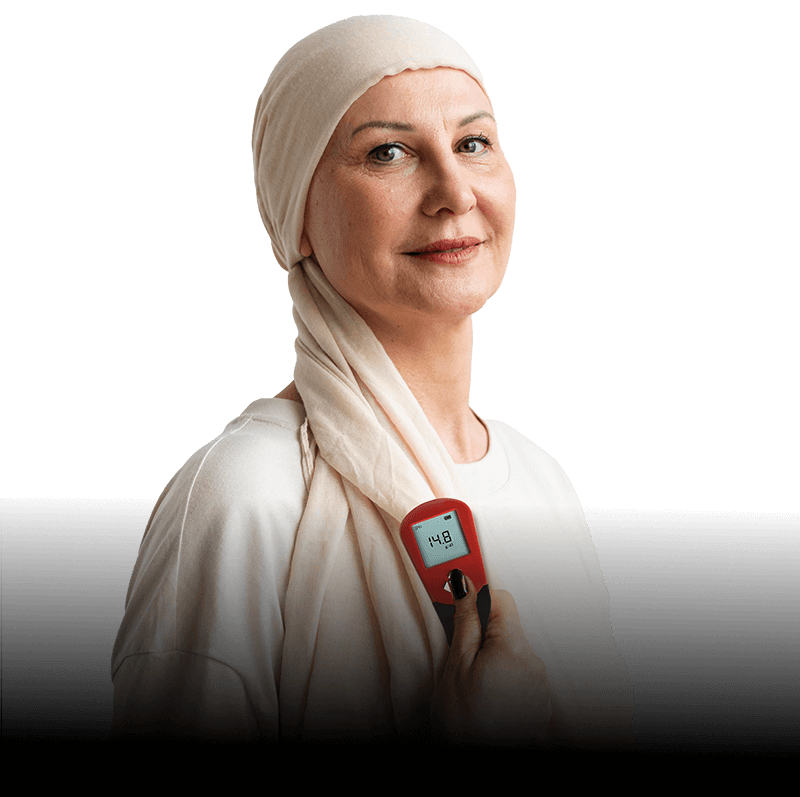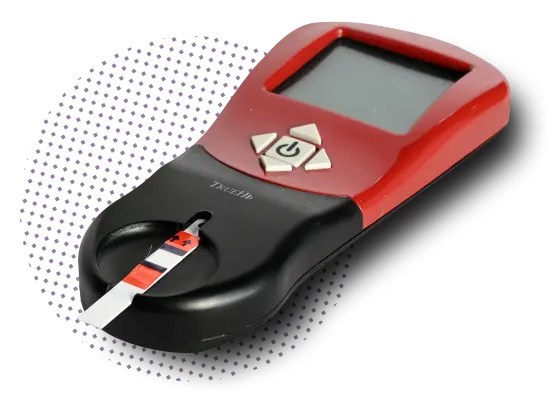Hemoglobin monitoring is a crucial tool in combating cancer. It provides overall insights into the dynamic aspects of cancer progression and treatment responses.



In the cancer patients who are undergoing chemotherapy or radiation therapy, their hemoglobin levels drop and they develop chemotherapy-induced anemia. Low hemoglobin in the blood leads to inadequate oxygen supply to different organs of the body, thus causing fatigue, weakness, and pallor in cancer patients. Regular monitoring of hemoglobin levels helps to prevent the risk of developing anemia.
When the tumor develops, there is a decrease in the hemoglobin levels in the blood due to less production of red blood cells. In these cases, the doctor gives ESA therapy to the patient to increase their hemoglobin. Hemoglobin monitoring helps doctors to adjust the therapies and treatment sessions effectively.
The abnormal growth of cells in the body forms tumors. The active tumor decreases hemoglobin levels and causes anemia. Cancer treatments lead to the shrinkage of tumors or make them less active thus, improving the hemoglobin levels. Regular hemoglobin monitoring helps to know the current health status of the cancer patient.
Hemoglobin monitoring is not only important for active cancer patients but also for post-cancer long-term follow-up care. Those patients who survived cancer are more prone to develop anemia or have low hemoglobin levels. There are very high chances of cancer recurrence which decreases hemoglobin levels. Regular hemoglobin monitoring can help you to detect and manage the post-cancer phase.
Cancer patients are at high risk of developing infections and the hospitalization rate is also high. Strict monitoring of hemoglobin in cancer decreases the hospitalization of patient and improves the immunity of the patient.
TrueHb monitoring device is a lifesaver for me. It helps me to track my hemoglobin levels easily at home and share my report with my doctor to plan my treatment strategies accordingly.
Though the most difficult phase of life, fighting with cancer is long gone, but I had to visit frequently to hospitals for my post-cancer check-ups and follow-ups. TrueHb kit has become an integral and invaluable part of my life that made my survivorship comfortable.

US Patented Technology| Instant Results| Wide range of measurement| Accuracy as per US CLIA guidelines|
Yes, hemoglobin levels fluctuate in cancer patients.
Currently, doctors ask the patients to get their hemoglobin tested in their labs or hospitals. Chemotherapy can only be performed if the hemoglobin of the cancer patient is in the range of 10-12 g/dL. If the patient has low hemoglobin, the patient feels week and scheduled chemotherapy cannot be performed which leads to an inconvenience for the patient. You can monitor your hemoglobin levels with a TrueHb hemoglobin monitoring device at home with one drop under one minute.
Cancer affects the production of red blood cells and patients who are going through chemotherapy develop anemia due to low hemoglobin levels.
Fatigue, weakness, shortness of breath, paleness, and dizziness are the common symptoms of anemia in cancer patients. Findings of the research papers have shown that maintaining the right hemoglobin levels in cancer patients improves their quality of life.
Treatment options include iron supplements, erythropoiesis-stimulating agents (ESAs), and blood transfusions in severe cases.
Yes, ESA usage may increase the risk of blood clot formation and progression of cancer. It is important to check the effects of ESA therapy on cancer patients by monitoring hemoglobin levels. ESA therapy is given to avoid blood transfusion and improve patients’ life by increasing the hemoglobin levels.
It should be monitored regularly, once in a week or fortnightly, as required. Cancer patients should also monitor their hemoglobin levels before going to their chemotherapy sessions to avoid inconvenience.
The cancer patients have to maintain hemoglobin in the range of 10-12 g/dL. Hemoglobin levels below 10 g/dL are considered low hemoglobin, and cause anemia.
Yes, low hemoglobin levels may limit the efficacy of cancer treatments like chemotherapy and radiation therapy.
No, hemoglobin monitoring is also important in long-term follow-up care for cancer survivors due to the risk of cancer recurrence.
No, monitoring your hemoglobin levels with a TrueHb device is not painful. You just need one prick to test your hemoglobin within seconds.
Recognizing symptoms is vital for addressing hemoglobin deficiency. If you've noticed any symptoms, please provide your email/phone number to recieve your symptom results for a free consultation with us if you are concerned about your health.
The content and information about the patented hemoglobinometer device displayed on this website are proprietary. Any unauthorized use, copying, or disclosure of this information, without explicit permission, is strictly prohibited and may result in legal consequences.
Copyright @ TrueHb All rights reserved 2024